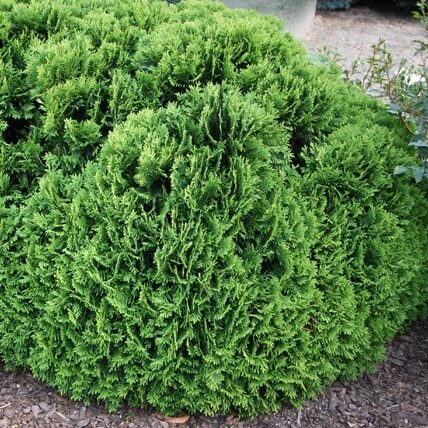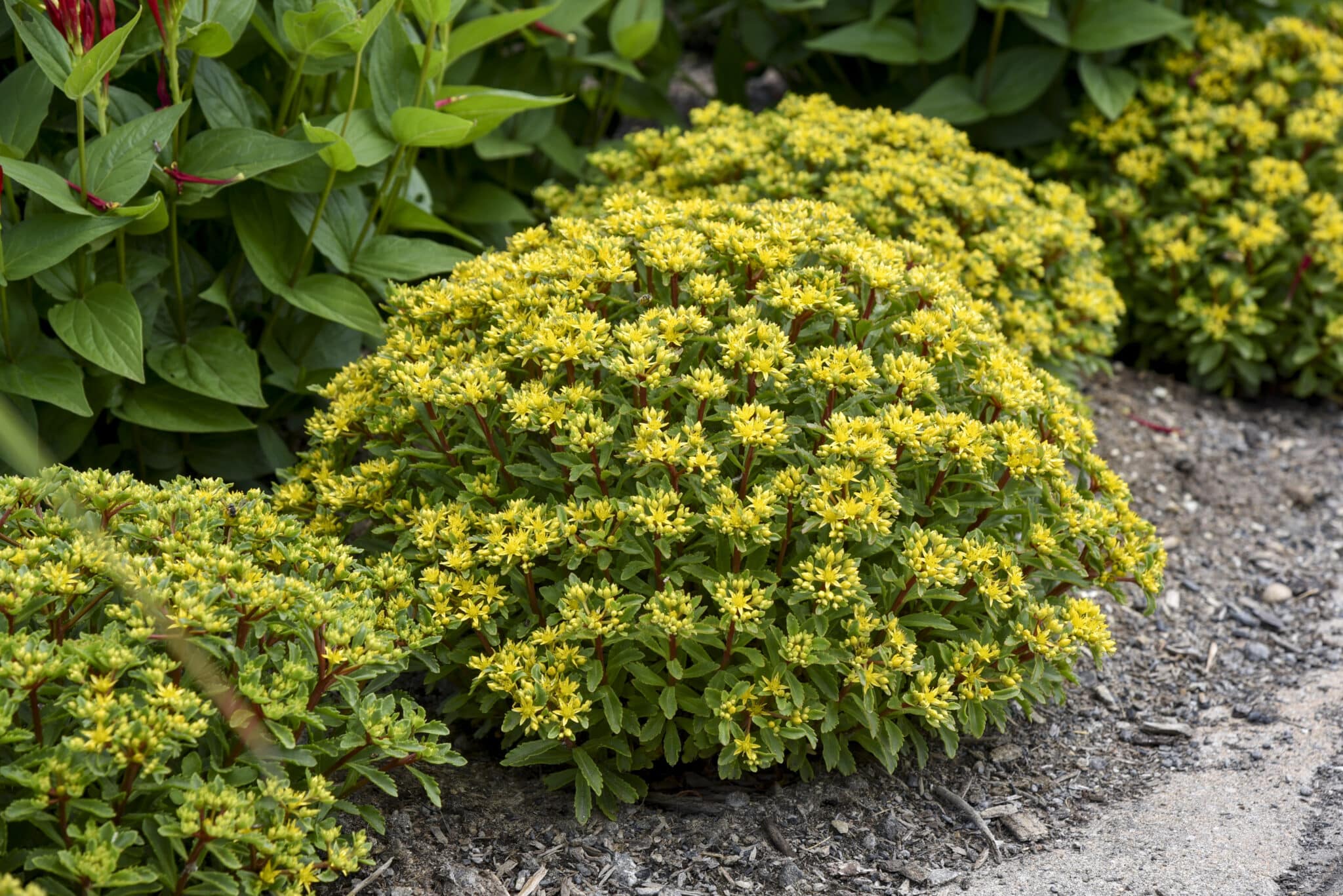Thuja occidentalis, Thuja plicata

Dwarf Arborvitaes are a landscape staple due to their compact size, easy care, and variety of colors and texture. Perfect in mass plantings or as an accent, there’s a Dwarf Arborvitae for just about any garden.
Like their full-size counterparts, Dwarf Arborvitaes can adapt to a number of growing conditions. With most varieties staying under 4 ft in height, Dwarf Arborvitaes are the perfect plant for borders, short hedges, foundation plantings, or even in containers! They are a great option for evergreen color in small spaces.
Most Dwarf Arborvitaes will take on shades of bronze to red in winter, adding yet another layer of interest to these easy-peasy evergreens.
Featured Varieties:
Hetz Midget – Slow-growing green foliage has a lacy appearance. 3-4 ft wide and tall in 10 years.
Danica – Deep green, glossy foliage is soft and shaggy. Very slow grower. 2 ft tall and wide in 10 years.
Gruene Kugel – Deep green, glossy foliage is coarse and shaggy with a loosely rounded habit. 3 ft tall by 4 ft wide in 10 years.
Mr. Bowling Ball– Blue-green foliage makes a compact ball, with fuzzy needles becoming more fan-shaped as the plant matures. 2-3 ft tall and wide in 10 years.
Fire Chief – Gold foliage with fiery orange tips form a rounded mound. A unique color for evergreens! 2-3 ft tall and 3-4 ft wide in 10 years.
Tater Tot – Deep green foliage forms a tight ball. 1-3 ft tall and wide in 10 years.
Anna’s Magic Ball – Loosely fanned yellow foliage grows in a squat, shaggy sphere. 2-3 ft tall by 2-4 ft wide in 10 years.
- Dwarf Arborvitaes can tolerate some shade, but they grow best with at least 6 hours of full sun.
- Water regularly and deeply, as Dwarf Arborvitaes do not like to dry out. Don’t wait for the foliage to look dry, as the damage is likely done by that point. Instead, monitor the top few inches of soil for moisture until you get a feel for your plant’s water needs and plan to give them some extra during periods of extreme heat or drought.
- As with all evergreens, Dwarf Arborvitaes don’t go completely dormant in winter and will still need regular, though likely less, watering.
- Dwarf Arborvitaes grow in a naturally rounded shape and don’t usually require pruning. If needed due to damage or shaping, trim your plant in early spring before new growth starts. Crunchy, brown spots and broken stems can be removed at any time.
Consider these companion plants:










